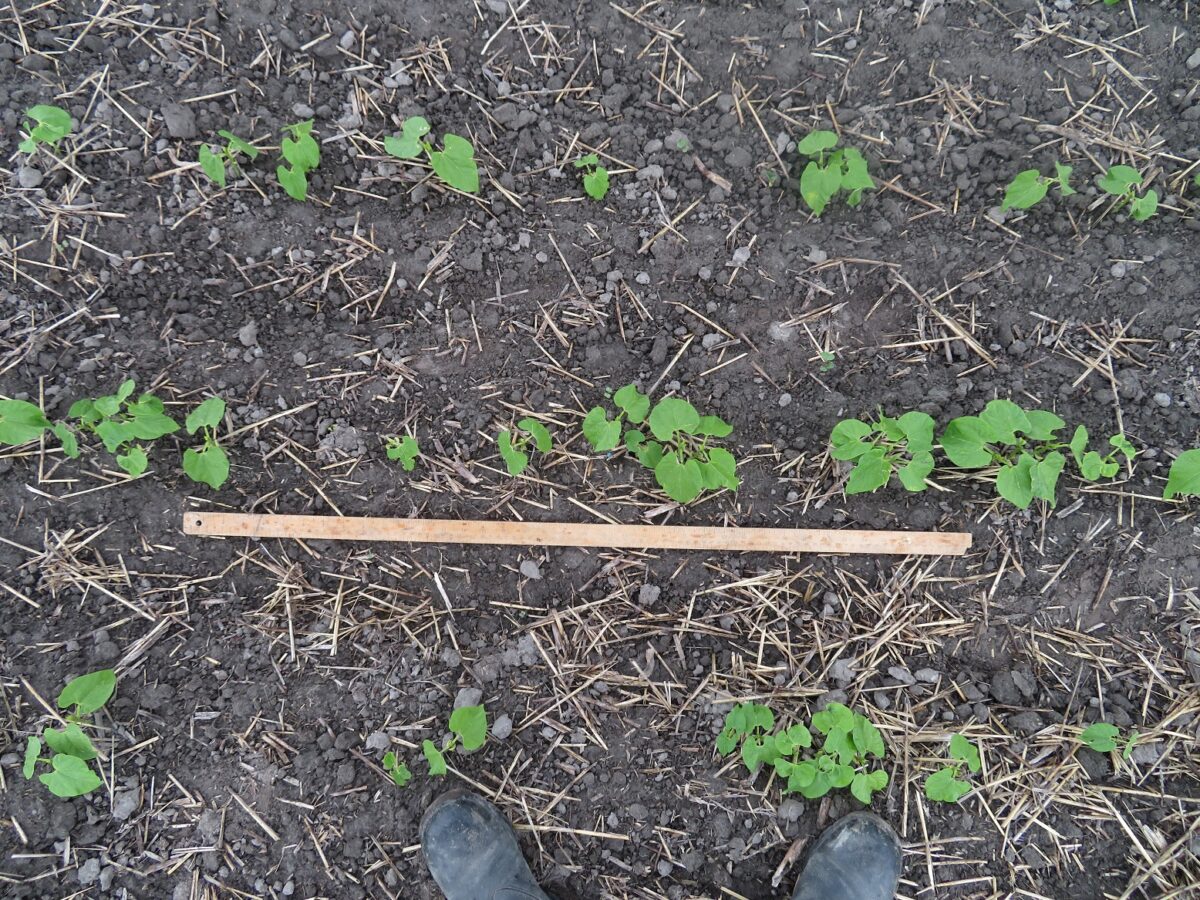The decision to replant can be one of the most difficult decisions for a producer to make. Stresses on the crop are additive and typically have a greater impact on dry edible beans than soybeans. An adequate stand of dry edible beans is a minimum of two-thirds to three- quarters of a full stand. Dry edible beans have a limited ability to branch and compensate for stand losses, particularly when there are other stresses at play.
Beans which germinate, but are slow to emerge, will often develop a thickened hypocotyl (stem), leaf out underground, or develop seedling diseases. When injury has been identified, flag a few areas in a field to monitor and reassess. Check the root system for new growth and for discolouration caused by root disease; the roots should be bright white. Compare the growth in injured areas to growth in unaffected areas. Consider that additional weed control and/or desiccants may be needed where plant stands are uneven. Fields with plants at a range of growth stages, e.g. where seedlings have herbicide injury, will have variable maturity through the season and at harvest time. Variable maturity causes significant problem at harvest time and contributes to delayed harvest and higher pick.
Minimum number of healthy plants in the row should be:
- 5-8 plants/m of row in 38-56 cm rows (2-2.5 plants/ft of row in 15-22 inch rows)
- 10-13 plants/m of row in 76 cm rows (3–4 plants/ft of row in 30 inch rows)
- 5–6.5 plants/m of row in 18 cm rows (or 1.5–2 plants/ft of row in 7 inch rows)
These numbers are based on good growing conditions, the good health of the remaining plants, a uniform stand and uncompacted soil.
Before replanting, consider the cause of the poor stand, the remaining population of healthy plants, plant uniformity, weed control needs and the date of replanting. Cranberry beans generally perform better under late planning scenarios than white beans or other coloured beans. Terminate the existing bean crop with glyphosate prior to replanting. Attempting to overseed into the existing crop will cause variable maturity leading to harvest issues.
